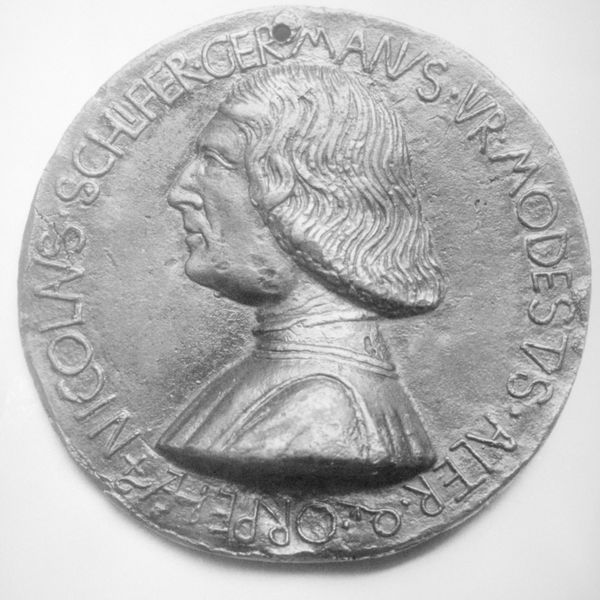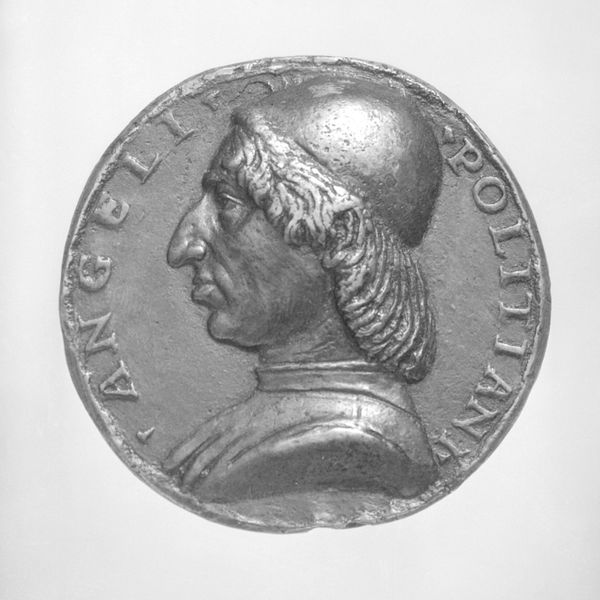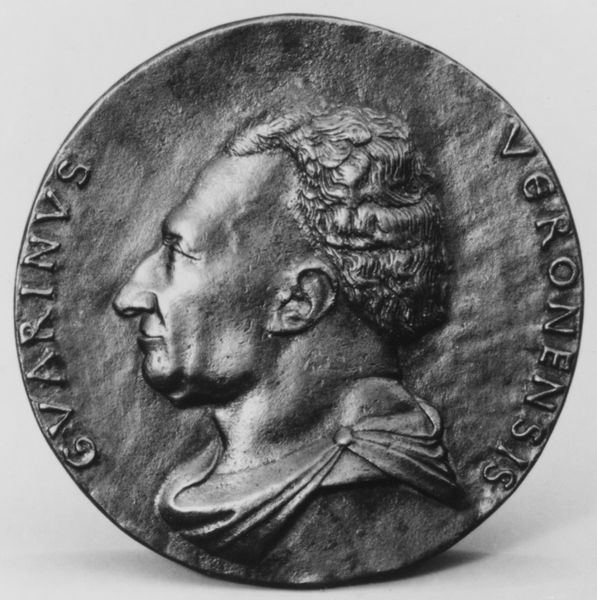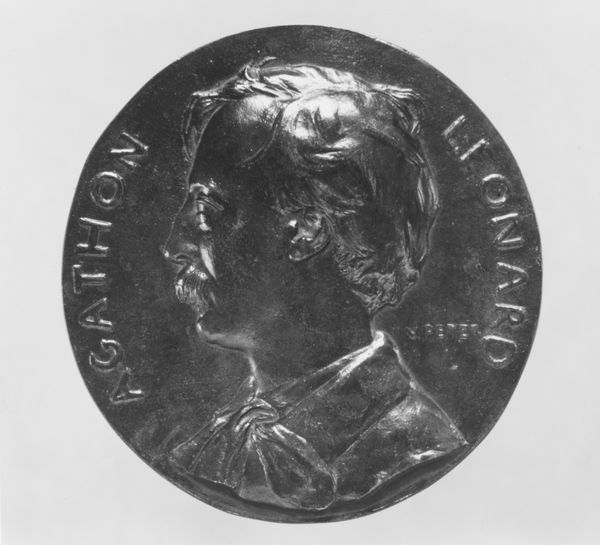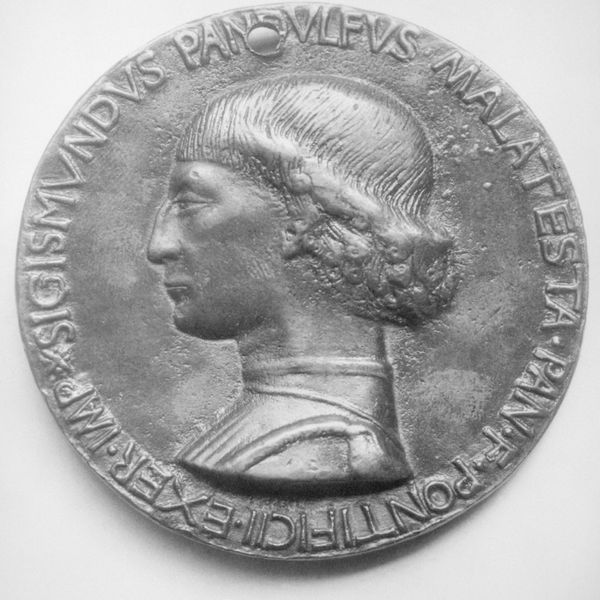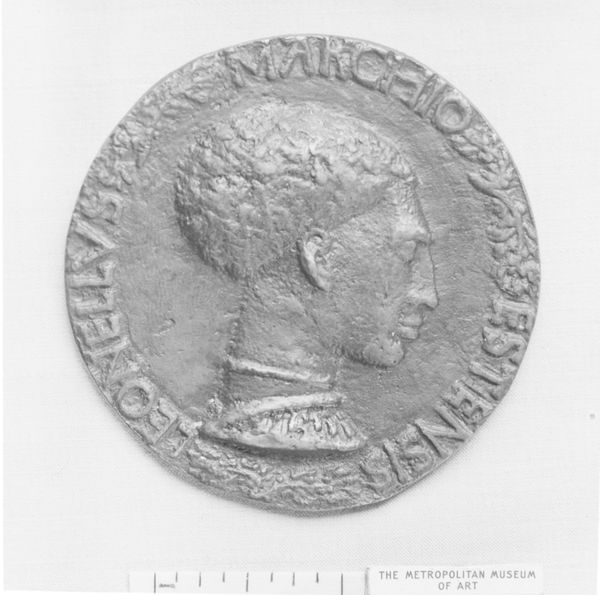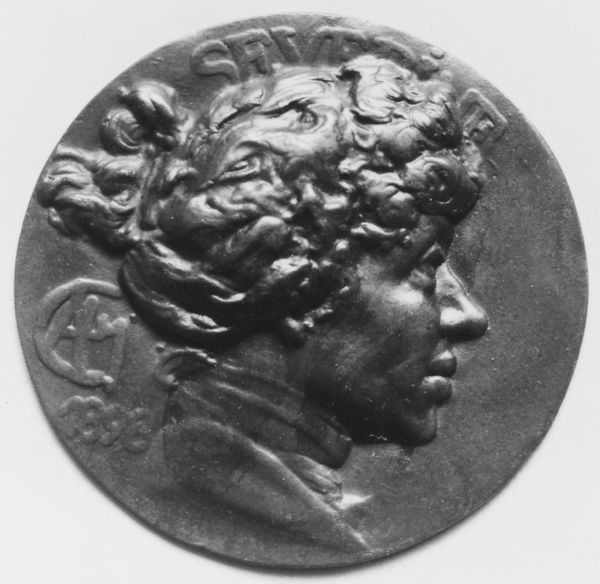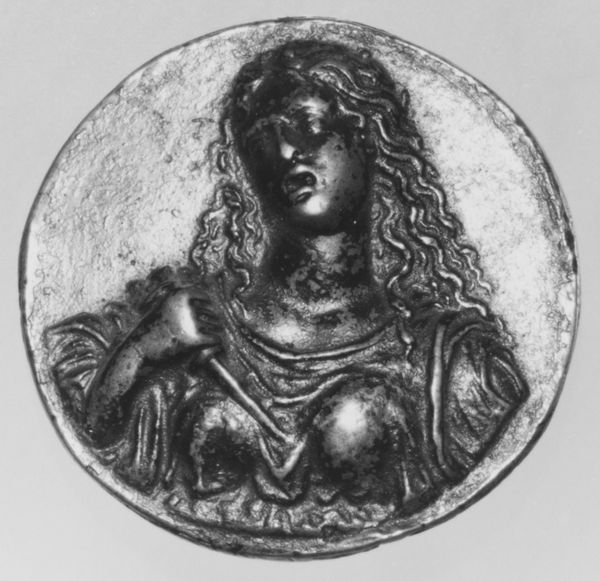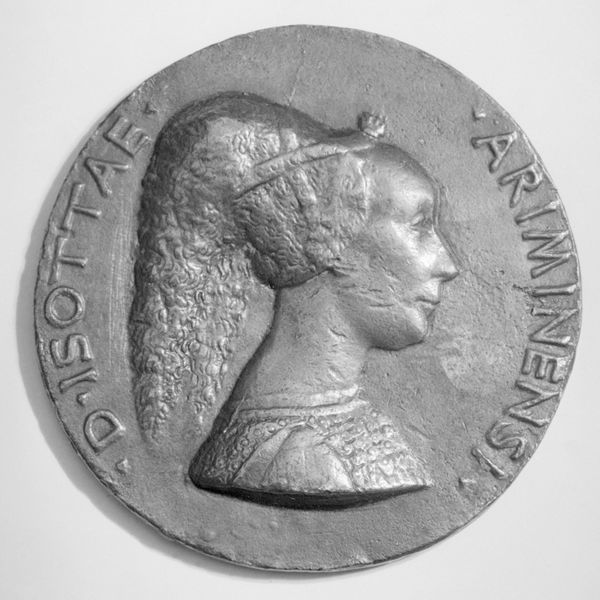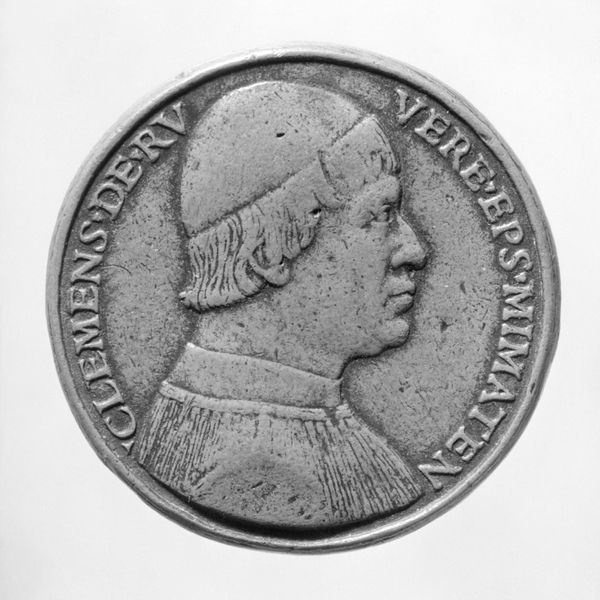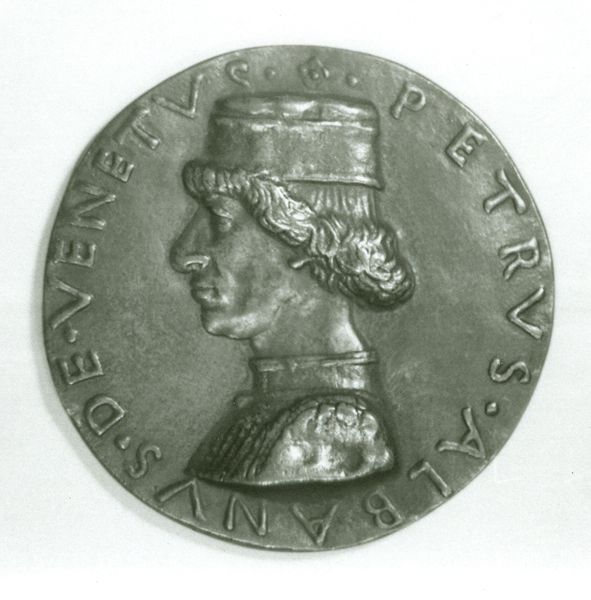
Antonio Pizzamani 1485 - 1495
0:00
0:00
bronze, sculpture
#
portrait
#
medal
#
bronze
#
11_renaissance
#
sculpture
#
decorative-art
#
italian-renaissance
Dimensions: Diameter: 57 mm
Copyright: Public Domain
Curator: Immediately striking is this bronze portrait medal crafted between 1485 and 1495. It goes by the name "Antonio Pizzamani", and the artistry is credited to Niccolò Fiorentino, also known as Niccolò di Forzore Spinelli. It’s currently housed at the Metropolitan Museum of Art. Editor: I find the subdued tone incredibly compelling. There's a gravity to the subject's gaze and expression, intensified by the cold, hard materiality of the bronze. It exudes quiet confidence and a touch of melancholy, wouldn't you agree? Curator: Yes, melancholy might just be the precise sentiment. The medal represents more than mere likeness; it was designed for circulation and commemorative purposes among elite social circles in Renaissance Italy. Pizzamani himself would have belonged to those influential networks. Editor: Medals in particular were interesting. How fascinating that the portrait presents him in profile. What symbol or classical model do you imagine it refers to? And I notice that inscription wrapping around... Does it give us clues? Curator: A profile was seen as more prestigious and reminiscent of Roman emperors on coins, naturally! And yes, you are correct about the inscription; It is the person's name meant to immortalize them and present them in the best possible light. This piece allows us a glimpse into the Renaissance practice of fashioning public figures to preserve a historical image, their carefully controlled representation designed to project influence and legacy. Editor: Looking closer at his distinctive hairstyle and that simple cap, it speaks to the period's fashion. His features also strike me, that prominent nose, a slightly pensive brow, perhaps indicating his status within his society? Or could it signify wisdom, an intellectual pursuit perhaps? The details in Florentino’s craftsmanship do such an excellent job to make it feel immediate. Curator: Precisely! Through these minute features, he is elevated into a figure worthy of admiration. But importantly for us today, it is this level of realistic and recognizable detail, combined with the symbolic value that speaks of how portraiture was used during the Renaissance. It's more than a beautiful object. It is, I agree, almost like a time capsule! Editor: I completely agree. It offers an intimate connection with Renaissance values of image-making that is about so much more than the individual sitter. Curator: Indeed. Considering it within a broader cultural narrative and Niccolò Fiorentino's talent only enhances its profound impact. Editor: This has definitely changed the way I will look at these Renaissance medals in the future.
Comments
No comments
Be the first to comment and join the conversation on the ultimate creative platform.
